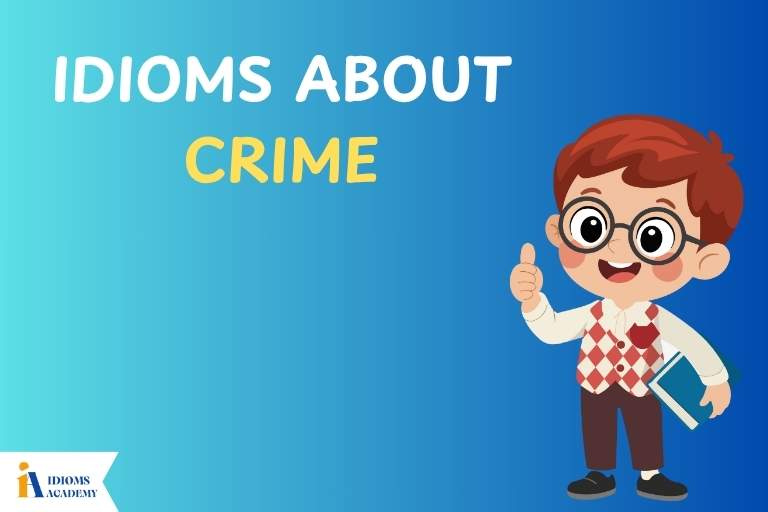For thousands of years, arrows were tools for survival. Hunters used them to bring food home, and soldiers relied on them in battle. Today, we don’t see arrows flying across fields the way our ancestors did, but the image still shows up all around us. You’ll notice arrows on road signs pointing the way, in games where they guide players, and even in everyday sayings that carry more meaning than the wooden shaft itself.
When people in the USA use “arrow” in an expression, they’re usually talking about more than just a simple object. These phrases often describe choices, feelings, or sudden moments that hit us straight on. Think of a friend saying someone was “hit by Cupid’s arrow,” or a coach reminding the team to “aim true.” Arrow idioms paint clear pictures in our minds, making conversations sharper and easier to imagine.
Idioms About Arrows
1. Straight as an arrow
Meaning: Describes someone who is honest, trustworthy, and always does the right thing. It can also describe something that is perfectly straight or direct, without bending. People use it when talking about character or even a path that doesn’t curve.
Example Sentences:
• My dad is straight as an arrow—he always tells the truth.
• She’s straight as an arrow when she talks to her friends.
• The trail behind the farm is straight as an arrow for miles.
Other ways to say: Very honest, truthful, direct
Fun Fact/Origin: This saying comes from how arrows, when shot properly, fly in a straight line without curving off.
Usage/Cultural Notes: Common in American English, especially to describe someone’s honesty. Still understood in British and Australian English, though Americans use it more in casual talk. Kids, adults, and even teachers might use it to describe good behavior or clear honesty.
2. Cupid’s arrow
Meaning: Describes the sudden feeling of falling in love, often unexpectedly. People use it when someone is instantly attracted to another person, almost like being struck by magic.
Example Sentences:
• When Jake saw Mia, Cupid’s arrow struck him.
• It felt like Cupid’s arrow hit her when she met her crush.
• The movie showed the hero getting struck by Cupid’s arrow.
Other ways to say: Fell in love, got a crush, head over heels
Fun Fact/Origin: Cupid comes from Roman mythology. He’s a playful god of love who shoots arrows that make people fall in love.
Usage/Cultural Notes: Very common in American English, especially in Valentine’s Day talk. British English also uses it, but it’s more tied to holiday cards, poems, or romantic settings. Kids and teens often use it to talk about crushes in a lighthearted way.
3. Arrow to the heart
Meaning: Refers to an experience that feels deeply painful or upsetting, often emotionally. It can be about words, actions, or moments that hurt someone inside.
Example Sentences:
• Her words were like an arrow to the heart.
• When he saw the empty chair, it felt like an arrow to the heart.
• The news of the loss was an arrow to the heart for the whole town.
Other ways to say: Deeply hurt, emotionally painful, cut to the core
Fun Fact/Origin: This phrase comes from the idea of an arrow causing severe pain, especially when striking the heart, which symbolizes emotions.
Usage/Cultural Notes: Used often in American English in both casual talk and literature. Similar phrases appear in British English, but Americans use it more in everyday conversations. It usually fits adult or teen speech rather than children’s talk.
4. Fire arrows
Meaning: Used when someone speaks or acts quickly, often throwing out questions, criticisms, or comments without stopping. It gives the sense of a rapid attack with words.
Example Sentences:
• The reporter fired arrows of questions at the mayor.
• He fired arrows of blame without thinking.
• The coach fired arrows of advice at the players.
Other ways to say: Ask rapidly, shoot out questions, throw words quickly
Fun Fact/Origin: The phrase is based on real battle tactics where soldiers launched arrows one after another to overwhelm their enemies.
Usage/Cultural Notes: This idiom appears more in American English, though British English speakers may understand it in context. It’s often used in news reports, sports, or heated discussions. Adults use it more often than children.
5. Quiver full of arrows
Meaning: Describes someone who has many skills, resources, or options available. It’s often used to show someone is well-prepared for challenges.
Example Sentences:
• She has a quiver full of arrows when it comes to solving problems.
• A coach with many plays has a quiver full of arrows.
• With his many talents, he keeps a quiver full of arrows for any job.
Other ways to say: Many skills, lots of choices, plenty of tools
Fun Fact/Origin: A “quiver” is the case that holds arrows for archers. Having a full quiver means being ready with many shots to take.
Usage/Cultural Notes: Common in American English, especially in sports and business talk. In British and Australian English, it is understood but less used in casual conversation. Adults tend to use it more, but kids may hear it in stories or movies with archery themes.
6. Arrow in flight
Meaning: Refers to something that has already started and can’t be reversed. Once it’s in motion, there’s no chance to stop or take it back. It often applies to choices, actions, or words.
Example Sentences:
• The project is like an arrow in flight—no turning back.
• Once you say it, the arrow is in flight.
• Their decision was an arrow in flight, already set in motion.
Other ways to say: Already in motion, too late to stop, set in stone
Fun Fact/Origin: An arrow, once released, cannot be pulled back. This makes it a strong symbol of final decisions or actions.
Usage/Cultural Notes: Common in American English, especially in business or decision-making contexts. British English has similar phrases, though “the die is cast” is used more there. Adults use it more than kids, since it often deals with serious decisions.
7. Dodge an arrow
Meaning: Describes avoiding danger, harm, or a big problem just in time. It gives the image of narrowly escaping something that could have caused real trouble.
Example Sentences:
• We dodged an arrow when the tree missed our car.
• He dodged an arrow by studying the night before the test.
• The town dodged an arrow when the storm changed direction.
Other ways to say: Avoided harm, escaped trouble, had a close call
Fun Fact/Origin: Dodging a real arrow is nearly impossible, so the saying highlights how unlikely and lucky it feels to escape.
Usage/Cultural Notes: Very common in American English, used in both casual and serious talk. In British English, “dodged a bullet” is often used instead. Both kids and adults use it, often for near accidents or avoided mistakes.
8. Arrow points the way
Meaning: Used when something or someone provides clear direction or guidance. It describes moments when advice or signs help a person choose the right path.
Example Sentences:
• The teacher’s advice was like an arrow pointing the way.
• His words helped me—the arrow pointed the way.
• The new road signs were arrows pointing the way to safety.
Other ways to say: Gives direction, helps choose, shows the path
Fun Fact/Origin: Road signs often use arrows to guide travelers, which inspired the phrase.
Usage/Cultural Notes: Mostly used in American English in both casual and thoughtful talk. In British English, the meaning is clear, though the phrase is less common. Adults use it more often, especially in advice or guidance contexts.
9. Take the arrow
Meaning: Refers to accepting blame, pain, or punishment in place of someone else. It shows selflessness, like stepping into danger for another person.
Example Sentences:
• He took the arrow for his brother’s mistake.
• She took the arrow so her team wouldn’t get in trouble.
• The manager took the arrow to protect her employees.
Other ways to say: Took the blame, protected others, fell on the sword
Fun Fact/Origin: Comes from battle scenes where someone might step in and literally take an arrow meant for another person.
Usage/Cultural Notes: Used more in American English, especially in workplace or team settings. British English has a close phrase “take the fall.” Adults use it more than kids since it deals with responsibility and sacrifice.
10. Miss the mark
Meaning: Describes failing to achieve a goal, making a mistake, or not getting the intended result. It often applies to jokes, tests, or attempts that don’t work out as planned.
Example Sentences:
• His joke missed the mark and nobody laughed.
• My answer missed the mark on the test.
• The ad campaign missed the mark with young people.
Other ways to say: Got it wrong, didn’t succeed, fell short
Fun Fact/Origin: Archery uses targets, and when arrows miss the center, they “miss the mark.” This carried over into everyday language.
Usage/Cultural Notes: Very common in American English and also widely used in British and Australian English. It works in both casual talk and formal writing. Kids, teens, and adults all use it often.
11. Shoot an arrow into the dark
Meaning: Refers to trying something without knowing if it will work. It describes guesses, risks, or attempts made with little or no information.
Example Sentences:
• He guessed the answer—it was like shooting an arrow into the dark.
• I applied to a college I didn’t know much about—an arrow into the dark.
• Their business idea was an arrow into the dark, but it paid off.
Other ways to say: Take a chance, guess blindly, gamble on it
Fun Fact/Origin: Archers need light to aim. Shooting in darkness makes hitting a target nearly impossible, which is why it shows uncertainty.
Usage/Cultural Notes: Heard in American English, especially in casual speech and writing. British English uses similar phrases like “a shot in the dark.” Adults use it more, but teens may use it when talking about guesses or risks.
12. Arrow-straight
Meaning: Describes something perfectly straight, without curves or bends. It can also describe posture, paths, or objects that hold a clean, direct line.
Example Sentences:
• The path was arrow-straight through the field.
• His posture was arrow-straight at the concert.
• The new road stretched arrow-straight into the horizon.
Other ways to say: Very straight, lined up, rigidly straight
Fun Fact/Origin: The phrase comes from the way arrows, when shot well, travel in a straight and direct line.
Usage/Cultural Notes: Common in American English when talking about roads or posture. British English speakers also use it but sometimes prefer “straight as a die.” Works in both casual and descriptive speech.
13. Like an arrow
Meaning: Describes movement that is extremely fast and direct. It often applies to running, flying, or objects moving quickly through the air.
Example Sentences:
• The soccer ball flew like an arrow into the net.
• He ran like an arrow across the field.
• The train shot forward like an arrow on the tracks.
Other ways to say: Super fast, speedy, quick as lightning
Fun Fact/Origin: Arrows move at great speed once released, which made them a natural comparison for anything swift.
Usage/Cultural Notes: Popular in American English, especially in sports and storytelling. In British English, similar expressions like “like a shot” are more common. Kids often use it to describe running fast in games.
14. Arrow sharp
Meaning: Refers to someone who is very clever, quick-witted, or smart. It compares sharp thinking to the sharp point of an arrow.
Example Sentences:
• She’s arrow sharp in math class.
• His ideas are always arrow sharp.
• The lawyer gave arrow sharp answers during the trial.
Other ways to say: Very smart, sharp-minded, quick thinker
Fun Fact/Origin: The saying is based on the sharp tip of an arrow, symbolizing alertness and intelligence.
Usage/Cultural Notes: Used mostly in American English, especially in schools and workplaces. British English also understands it, but phrases like “sharp as a tack” are more common there. Often used for adults or students who stand out intellectually.
15. Bend the arrow
Meaning: Refers to trying to change something that is impossible to alter, such as the past or a fixed decision. It suggests wasted effort in trying to undo what’s already set.
Example Sentences:
• You can’t bend the arrow of time.
• Don’t try to bend the arrow once it’s released.
• His plan failed because he tried to bend the arrow.
Other ways to say: Change the past, undo the action, reverse the course
Fun Fact/Origin: In real life, arrows can’t bend once shot. This truth shaped the saying about irreversible events.
Usage/Cultural Notes: Mostly heard in American English, often in reflective or serious talk. British English may use similar sayings like “what’s done is done.” Adults use it more, especially when talking about regret or fixed outcomes.
16. Draw your bow
Meaning: Means to prepare for action, decision, or response. It paints the picture of someone getting ready but not yet releasing their effort.
Example Sentences:
• He drew his bow before starting the debate.
• She drew her bow and got ready for the contest.
• The team drew their bows, waiting for the final whistle.
Other ways to say: Prepare, get ready, brace yourself
Fun Fact/Origin: In archery, you draw a bow back before letting the arrow fly. That moment of readiness inspired the saying.
Usage/Cultural Notes: Common in American English, though not as frequent in everyday British English. It fits well in formal speeches, sports, or situations calling for readiness. Adults use it more than children.
17. Aim true
Meaning: Refers to doing something with clear purpose, honesty, or accuracy. It suggests being steady and focused in order to get the best outcome.
Example Sentences:
• If you aim true, you’ll do the right thing.
• Her message aimed true and made everyone think.
• The coach told the players to aim true in their choices.
Other ways to say: Be honest, be clear, stay focused
Fun Fact/Origin: Archers must aim with precision to hit the target, which led to the phrase being used for honesty and purpose.
Usage/Cultural Notes: Common in American English, especially in inspirational or motivational speech. In British English, the phrase is understood but used less often. Works for both formal and informal settings, often in advice-giving.
18. The arrow has left the bow
Meaning: Describes a situation that has already begun and cannot be undone. Once the action is taken, there’s no way to go back or change it.
Example Sentences:
• I already told him now the arrow has left the bow.
• Once she hit send, the arrow had left the bow.
• Their decision was final; the arrow had left the bow.
Other ways to say: It’s already begun, no turning back, set in motion
Fun Fact/Origin: In archery, once an arrow is released from the bow, it cannot be called back. This created the expression about irreversible actions.
Usage/Cultural Notes: Common in American English in both formal and casual talk. In British English, a similar phrase is “the die is cast.” Often used by adults in business, politics, or serious conversations.
19. Arrows in the wind
Meaning: Refers to efforts that are uncertain or likely to fail. It suggests that attempts are being made, but conditions make success doubtful.
Example Sentences:
• Trying to please everyone is like arrows in the wind.
• His guesses were just arrows in the wind.
• Their plan felt like arrows in the wind against strong opposition.
Other ways to say: Wasted effort, unsure try, a long shot
Fun Fact/Origin: Arrows can be thrown off course by strong winds, making accuracy unlikely. The phrase compares this to attempts with little chance of success.
Usage/Cultural Notes: Heard mostly in American English, but less common in British English where “a shot in the dark” is often preferred. Used in reflective talk, especially by adults.
20. Arrow of time
Meaning: Expresses the idea that time only moves forward, never backward. It emphasizes that past events cannot be changed, only remembered.
Example Sentences:
• The arrow of time moves only forward—we can’t go back.
• You can’t undo the past; the arrow of time flies.
• Scientists study the arrow of time to explain why things age.
Other ways to say: Time goes on, no going back, time only moves forward
Fun Fact/Origin: Popularized in science, especially physics, where “the arrow of time” describes how time flows in one direction.
Usage/Cultural Notes: Used more in academic or thoughtful discussions in American English. In British English, it is also used but often limited to scientific or literary contexts. Adults use it when reflecting on life or science.
21. Arrows of blame
Meaning: Refers to accusations or criticism aimed at someone. It paints the image of words or blame hitting like arrows.
Example Sentences:
• The arrows of blame flew when the game was lost.
• Don’t throw arrows of blame—it’s not fair.
• In the meeting, the manager faced arrows of blame.
Other ways to say: Accusations, blaming others, pointing fingers
Fun Fact/Origin: The idea comes from comparing harsh words or accusations to sharp arrows that can hurt someone.
Usage/Cultural Notes: Common in American English in work, family, or political contexts. In British English, “pointing the finger” is more common. Adults use it more often, especially in conflict situations.
22. Pointed like an arrow
Meaning: Describes something very direct, sharp, or focused. It often applies to words, looks, or actions that cut straight to the point.
Example Sentences:
• Her answer was pointed like an arrow.
• He looked at her with a stare pointed like an arrow.
• The lawyer’s question was pointed like an arrow.
Other ways to say: Sharp, direct, to the point
Fun Fact/Origin: The phrase comes from the sharpness and direct flight of an arrow, making it a symbol of focus and precision.
Usage/Cultural Notes: Used in American English to describe blunt honesty or piercing looks. British English uses “cutting” or “sharp” more often, though the phrase is still understood. Adults use it most, especially in debates, work, or formal settings.
23. Follow the arrow
Meaning: Refers to following signs, guidance, or the right path. It suggests moving in the correct direction by trusting markers or advice.
Example Sentences:
• If you follow the arrow, you’ll find the way out.
• Follow the arrow to find where you need to go.
• The hikers followed the arrow signs on the trail.
Other ways to say: Follow the path, go the right way, stick to the route
Fun Fact/Origin: Maps and road signs often use arrows to guide people, which led to the expression.
Usage/Cultural Notes: Common in American English when giving instructions or guidance. In British English, people may say “follow the signs” more often. Kids, travelers, and adults all use it in practical situations.
24. An arrow in the side
Meaning: Describes an unexpected problem or obstacle that causes difficulty. It emphasizes surprise or discomfort that interrupts plans.
Example Sentences:
• The delay was an arrow in the side of our plan.
• That comment felt like an arrow in the side.
• Technical issues were an arrow in the side during the show.
Other ways to say: Trouble, unexpected issue, setback
Fun Fact/Origin: The saying comes from the painful image of being struck by an arrow when unprepared, symbolizing sudden problems.
Usage/Cultural Notes: Used in American English, mostly in work or planning contexts. British English uses “a spanner in the works” as a similar phrase. Adults use it more often, especially in professional or serious talk.
25. Arrows of truth
Meaning: Refers to honest words that may be painful to hear. It suggests that truth, while necessary, can sometimes strike hard.
Example Sentences:
• Her words were arrows of truth they hurt but were needed.
• He spoke arrows of truth, even if they were hard to hear.
• The coach’s arrows of truth pushed the team to improve.
Other ways to say: Hard truth, honesty, blunt words
Fun Fact/Origin: The phrase links the piercing quality of arrows to truth, which can also strike deeply when spoken plainly.
Usage/Cultural Notes: Used in American English in both formal and casual conversations. British English has a similar idea with “the naked truth.” Adults use it most, especially in teaching, leadership, or serious advice.
Quiz: Idioms About Arrows
Instructions: Choose the correct meaning for each idiom. Each question has one correct answer. Use what you’ve learned from the idioms to find the best choice.
Question Key
1. What does “straight as an arrow” mean?
A) Not sure what to do
B) Very honest and direct
C) Full of surprises
2. If someone says “Cupid’s arrow struck him,” what happened?
A) He got hurt
B) He got lost
C) He fell in love
3. What does it mean to “miss the mark”?
A) Win a prize
B) Hit the target
C) Fail to do something right
4. If you “dodge an arrow,” what does that mean?
A) You got hit
B) You avoided trouble
C) You gave up
5. What does “arrow in flight” suggest?
A) Something has already started
B) Something is broken
C) Something is slow
6. If someone has a “quiver full of arrows,” what do they have?
A) Too many problems
B) Lots of skills or options
C) No help
7. What does “take the arrow” mean?
A) To run away
B) To accept blame or hurt for someone else
C) To shoot something
8. If someone “fires arrows” in a talk, what are they doing?
A) Talking quietly
B) Asking fast and sharp questions
C) Shooting for fun
9. What does “arrow of time” mean?
A) Time moves in circles
B) Time can go backward
C) Time moves forward and can’t be reversed
10. What are “arrows of blame”?
A) A fun game
B) Accusations or blame toward someone
C) Praise and thanks
Answer Key
- B) Very honest and direct
- C) He fell in love
- C) Fail to do something right
- B) You avoided trouble
- A) Something has already started
- B) Lots of skills or options
- B) To accept blame or hurt for someone else
- B) Asking fast and sharp questions
- C) Time moves forward and can’t be reversed
- B) Accusations or blame toward someone
Wrapping Up
Arrow idioms give us quick, vivid ways to talk about honesty, love, speed, or even setbacks. They take a simple object, an arrow and turn it into a picture we can easily imagine. Many of these sayings come from old traditions, but they still feel fresh in conversations today. Whether you’re chatting with friends, writing a story, or giving advice, these expressions can add color and meaning.
In everyday American talk, idioms like these make language easier to understand and more engaging. They show how words can paint a scene instead of just giving facts. Try slipping one into your next conversation you’ll notice how it makes your point clearer and more memorable. Keep these arrow idioms in your toolbox of expressions, ready to pull out whenever you need them.




